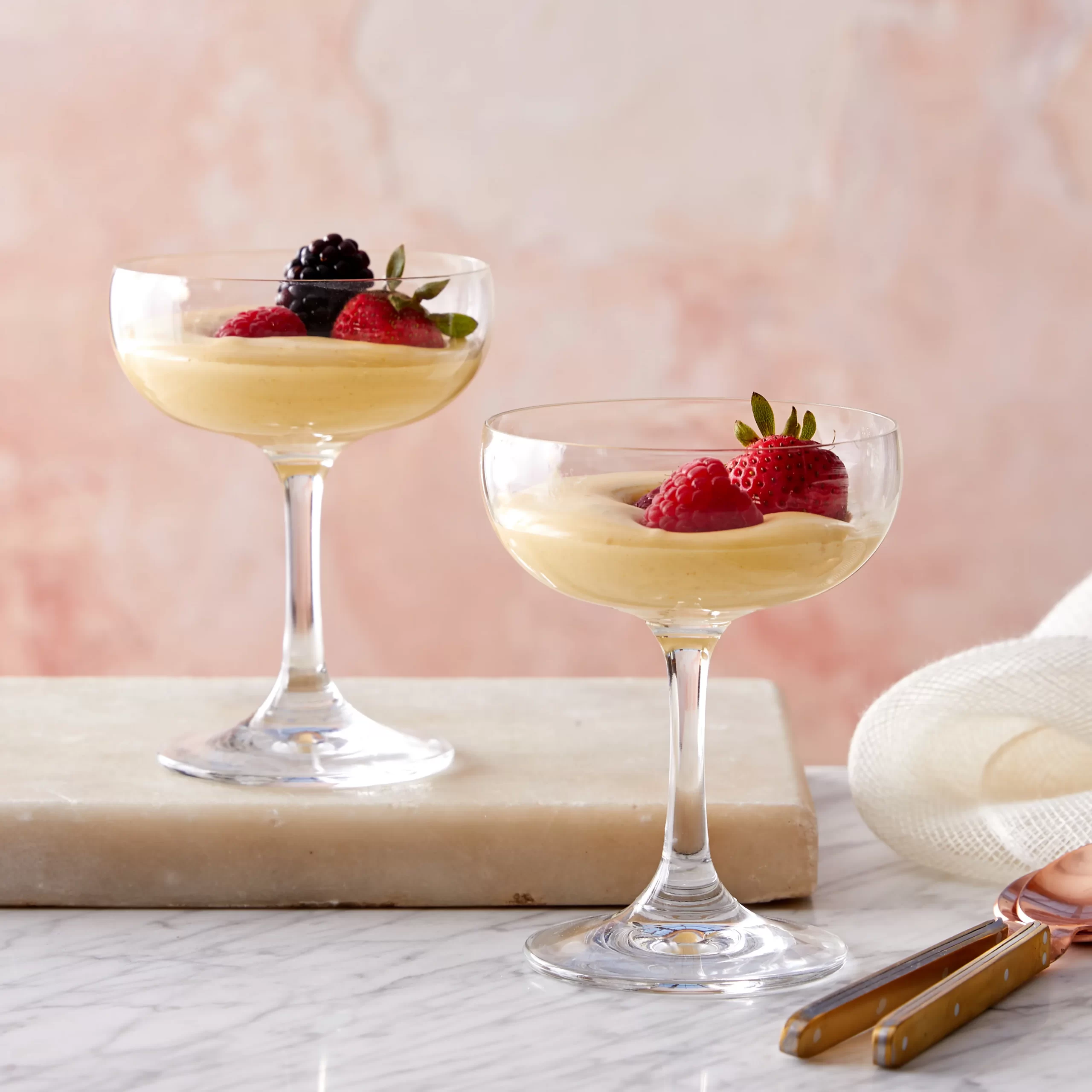If it was the end of the dinner service in an Italian or French restaurant my mother would ask the waiter “does the chef have time for a zabayone?” This off-menu delicacy was a divine mystery of my childhood. Many years later it re-appeared as a flavor of Argentine ice cream (sabayon) and Italian filled pastries (zabaione).
I was wondering about it to a friend one day who announced “but it’s so easy to make”. So my New Years resolution of 2020-21 was to learn.
It began with assembling the necessary equipment: a whisk and a double boiler (any two pots that can stack sealing a “bath” of water in the lower one to steam the contents of the top one (or a metal bowl and a cooking pot) .
Before starting to cook you also want to prepare the service and the people who will be eating. The idea is to eat it warm, and that only lasts a couple of minutes. So everyone needs to be ready before you start cooking. You want to serve in something transparent and not to flat, to slow cooling. White wine or martini glasses are popular, but a rocks glass will do. You can put some fresh fruit in the wine glass, but it’s delicious on its own.
The recipe is extremely simple and takes less than 5 minutes, but one moment in the technique requires intense attention, and practice.
Following Felicity Cloake’s guide from The Guardian I have tried a number of variations and settled on these ingredients:
- 4 egg yolks
- 3 tbsp white sugar (brown or raw sugar were not as good)
- 2 tbsp grappa/marc or brandy
- 2 tbsp wine, traditionally marsala, but could be a fine red wine, elderflower wine, or something else you like the taste of.
- 1 pinch salt
The flavor of the alcohol is really up to your personal preference so be sure to experiment and try different things.
In the upper pot/bowl, whisk egg yolks and sugar until thick and creamy. Slowly add alcohols and salt.
Now comes the crucial and tricky part. You’re going to “cook” the mixture over the steam of boiling water trapped between the two pans. The art is cooking it enough but not too much. In my experience the cooking time is less than one minute. You stand there whisking constantly, vigilantly watching the texture of the cream change. At the moment that it stops being a liquid and is a foam, take the bowl off the heat and continue whisking. The heated whisking is to create some firmness in the mixture. The second whisking off the heat is to make it creamy, and it took me about 2 minutes.
Pour the cream into the wine glasses and serve immediately.




